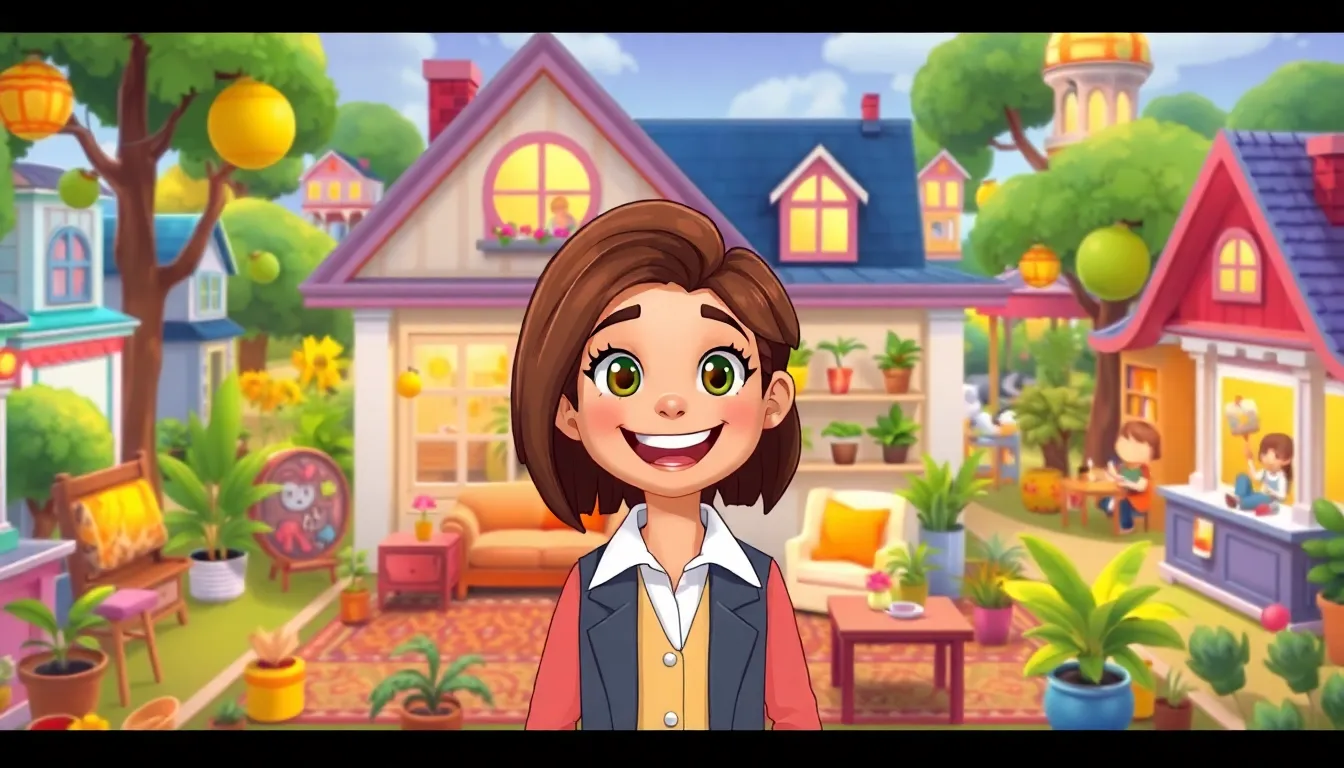Table of Contents
ToggleIn the world of storytelling, character growth arcs are the secret sauce that transforms a flat character into a three-dimensional powerhouse. Think of them as the personal trainers for your favorite heroes and villains, guiding them through a rigorous regimen of trials, tribulations, and the occasional existential crisis. Without a solid growth arc, characters risk becoming as forgettable as last week’s leftovers.
Imagine a character who starts off as a self-absorbed know-it-all but evolves into a compassionate leader. That transformation isn’t just for show; it’s the heartbeat of a compelling narrative. Readers crave connection and growth, and a well-crafted arc can turn even the most mundane tale into a captivating journey. So buckle up as we dive into the art of character growth arcs and discover how they can elevate storytelling to new heights.
Understanding Character Growth Arcs
Character growth arcs depict the transformation of individuals within narratives. These arcs provide insight into how experiences shape characters over time.
Definition of Character Growth Arcs
Character growth arcs represent the process of personal development throughout a story. Characters begin at one point, often facing internal or external conflicts that challenge their beliefs and motivations. Growth involves significant shifts in perspective, emotional states, or behaviors. For example, a timid character may evolve into a confident leader after overcoming adversity. These arcs can be both subtle and profound, addressing various aspects of human experience.
Importance in Storytelling
Character growth arcs drive engagement and connection with the audience. Readers often invest emotionally in characters who undergo challenges and transformation. These arcs enhance the narrative by adding depth and relatability to characters. They reveal how individuals respond to circumstances, allowing audiences to see parts of themselves in the characters. Effective growth arcs contribute to more immersive storytelling, encouraging readers to reflect on their journeys. This connection often results in lasting impressions and deeper appreciation for the narrative.
Types of Character Growth Arcs
Character growth arcs can be classified into three main types: positive, negative, and flat. Each type features distinct journeys that characters undertake throughout a narrative.
Positive Growth Arcs
Positive growth arcs refer to characters who evolve in a constructive manner. These characters often begin with flaws, face significant challenges, and ultimately achieve personal development. An example includes a lonely individual who learns to trust others and builds meaningful relationships. Positive growth fosters a sense of hope, allowing readers to connect with characters through relatable struggles and improvements. Transformations within positive arcs often align with overcoming adversity, gaining confidence, or learning empathy.
Negative Growth Arcs
Negative growth arcs illustrate characters experiencing decline or regression. Characters often start with redeeming qualities but gradually succumb to their vices. A classic example features a once-heroic figure who becomes corrupt due to power or greed. Such arcs highlight the consequences of poor choices, driving home themes of morality. Readers witness the deterioration of values and relationships, resulting in emotional tension. These arcs evoke feelings of tragedy, deepening the narrative’s complexity and impact.
Flat Growth Arcs
Flat growth arcs exhibit minimal or no character development. Characters remain static despite the surrounding events, lacking significant internal change. A character who maintains the same mindset throughout a story, like a stubborn individual who refuses to adapt, exemplifies this type. Flat arcs can serve specific purposes, such as highlighting contrasting dynamic characters or emphasizing thematic elements. While these arcs may not engage the audience emotionally, they still contribute to the overall narrative structure and can reflect realism in everyday life.
Elements of Effective Character Growth
Effective character growth involves various elements that contribute to a character’s transformation. Two crucial elements include internal conflicts and external influences, each playing a significant role in shaping narratives.
Internal Conflicts
Internal conflicts drive character evolution by presenting emotional struggles and dilemmas. Characters often grapple with insecurities, guilt, or fear that challenge their core beliefs. These conflicts lead to self-reflection, forcing characters to confront their weaknesses. For example, a confident businesswoman might find her assertiveness questioned when dealing with personal loss. Such moments create opportunities for growth, where she can emerge stronger with newfound empathy and resilience. Overall, internal conflicts enrich storytelling by making protagonists relatable and authentic.
External Influences
External influences shape characters’ growth through interactions with their environment. Relationships, societal expectations, and crises contribute significantly to character development. Friends might offer support or challenge a protagonist’s choices, introducing new perspectives and growth opportunities. Environmental factors such as war, family dynamics, or cultural shifts can also compel characters to adapt. A shy teenager who faces bullying may find strength through supportive peers, paving the way for transformation. Ultimately, external influences provide the context for characters to evolve and resonate with audiences.
Analyzing Character Growth Arcs in Popular Media
Character growth arcs manifest powerfully across various media, enhancing narrative depth and audience connection. They often engage viewers and readers by showcasing transformations that resonate on personal levels.
Literature Examples
In literature, notable growth arcs shape character dynamics. Elizabeth Bennet in Pride and Prejudice evolves from prejudice to understanding, impacting her relationships with Darcy and her family. Jay Gatsby experiences a decline in The Great Gatsby, illustrating the hollowness of his pursuit of the American Dream. These examples demonstrate how challenges lead to profound character insights, emphasizing the emotional stakes for readers.
Film and Television Examples
Films and television series depict growth arcs vividly, fostering viewer engagement. In The Lion King, Simba transitions from a timid cub to a courageous leader, illustrating the impact of personal loss on growth. Walter White in Breaking Bad showcases a negative growth arc as he transforms from a mild-mannered teacher to a ruthless drug kingpin, highlighting the consequences of choices. Such portrayals create emotional investment, enriching the overall narrative experience.
Character growth arcs are vital in crafting engaging narratives that resonate with audiences. They not only shape characters but also enhance the emotional journey readers experience. As characters face challenges and evolve, they reflect the complexities of real life, making stories more relatable and impactful.
By understanding the different types of growth arcs and their influences, writers can create richer characters that captivate and inspire. The journey of transformation adds depth to storytelling, encouraging readers to connect with the characters on a personal level. Ultimately, character growth arcs are essential tools for any storyteller looking to leave a lasting impression.







